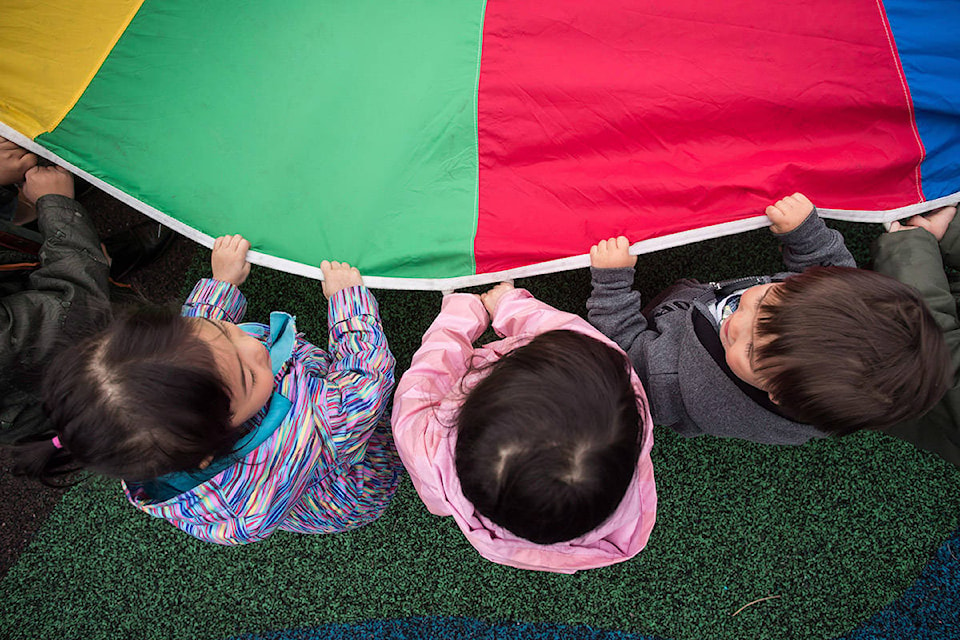When the Liberals unveiled a plan for child care in Wednesday’s (Sept. 23) Throne Speech, University of B.C. associate professor Paul Kershaw said he was feeling hopeful hearing the issue take centre stage as Canada plans for its COVID-19 recovery.
“It is significant to see child care featured so prominently in a throne speech,” said University of B.C. associate professor at the School of Population and Public Health and Generation Squeeze founder Paul Kershaw.
“But throne speeches are ultimately not really the place where you know really how serious people are.”
READ MORE: Liberals vow wage-subsidy extension to 2021, revamp of EI system in throne speech
This year’s Throne Speech, given on Sept. 23 by Gov. Gen. Julie Payette, mentioned child care as a factor in helping women be a part of Canada’s economic recovery from the pandemic. While job losses have hit many sectors and demographics since COVID-19 first led to a shutdown of much of society in March, women have been particularly affected. As the pandemic began, Statistics Canada data showed that women became unemployed at twice the rate of men.
The problem is compounded when it comes to parents. A UBC study released in July found that the gap between employment of dads and moms of school-aged children had grown from 0.8 to 7.3 per cent, with women trailing.
Kershaw said that if the federal government acts quickly, a child care investment could head off the worst gender employment gap if a second wave of COVID-19 leads to renewed job losses.
“If the government were to invest really quickly an extra $2 billion right now… could go a significant way to keep child care spaces open during a pandemic and bring their costs down to they’re actually affordable.”
Along with helping women stay in the work force, Kershaw said that investing in quality, affordable child care could stop inequality – which grows during an economic crisis but does not always shrink after – from deepening.
“When we widen inequality in the earliest years, you then really risk locking in that this inequality will persist over time as people age,” he said. “When we optimize the start that young people get… they’re less likely to fail in school, less likely to wind up in jail, less likely to fall ill as adults in ways that we could have prevented.”
RAED MORE: Feds probing ways to address COVID-19 impact on women
Eventually, that $2 billion would have to be raised to a $10 billion investment, Kershaw noted, to build up to a national child care program. However, with a deficit north of $330 billion, Kershaw said that extra child care funding is “a rounding error” in comparison
“Now is the time is to not confuse child care with the fiscal problem,” he added.”
The national system could become similar to the Quebec model, which started at $5 a day in the late 1990s, and for 2020 sits at $8.35 per day and is paid directly to the child care facility.
However, Kershaw thinks that a national program should avoid the sliding scale that Quebec has now gone to, with the highest earners paying up to $20 a day.
“I think that is not a good recipe. We don’t have [sliding scale] approach when we go to a doctor, we don’t have that approach when we go to grade school… I think we need to have a consistent fee.”
That daily fee, he added, should top out at $10 per day, with discounts for lower income families that can’t afford it. A means-tested system that raises costs for more well off families will just be more expected and complicated to implement, he noted, and that money can be recouped in other ways from higher income households.
“Those with more means will contribute more to child care… as is appropriate,” Kershaw said, but said the most efficient way to do that is a flat fee at the door and income taxes staggered by income level, which Canada already does for other free or flat fee services like health care and education.
Like us on Facebook and follow us on Twitter.
Want to support local journalism during the pandemic? Make a donation here.
